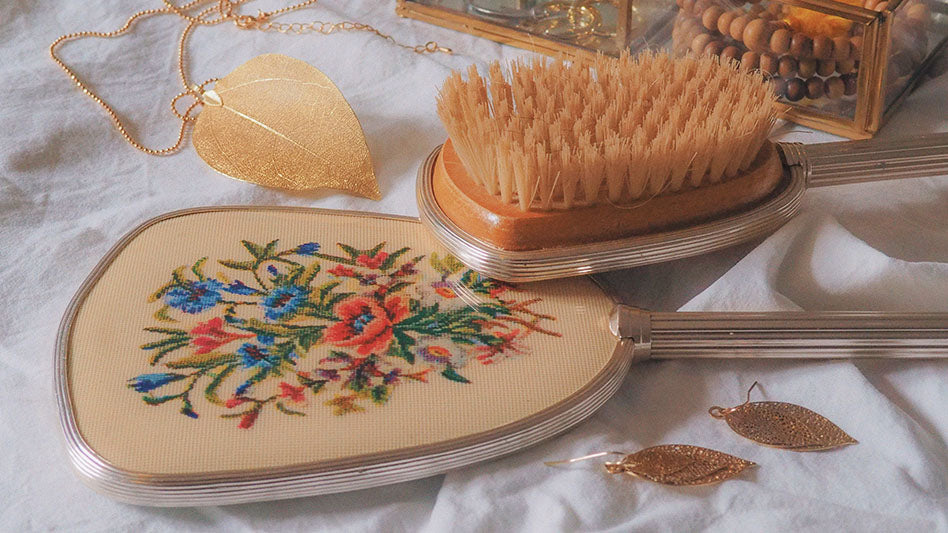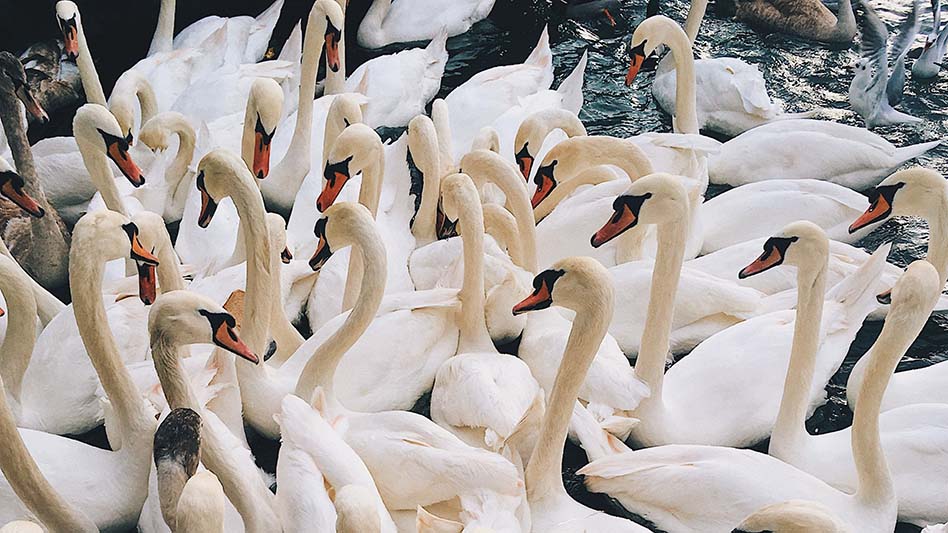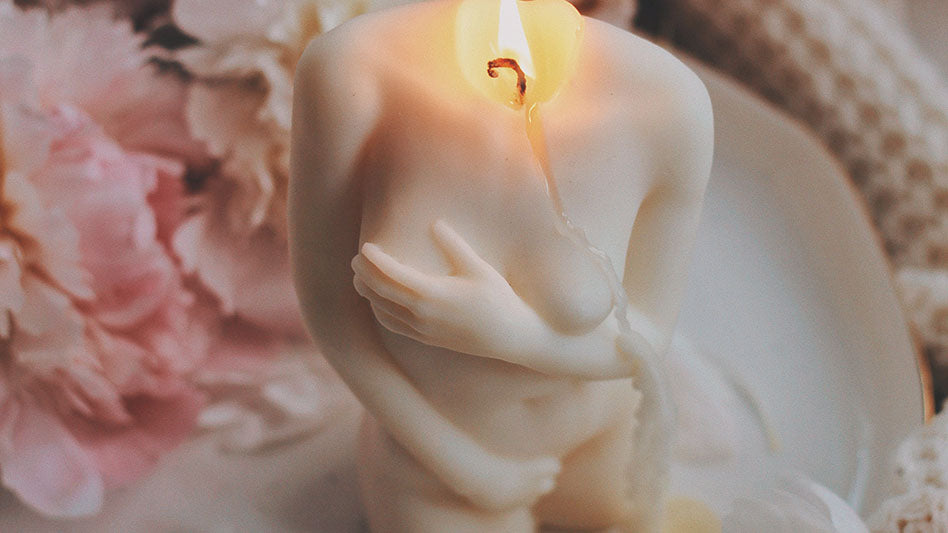Aphrodite is often heralded as the ethereal embodiment of pure love, beauty, and desire. Yet, just like the many emotions that color our human hearts, this goddess's mythos is beautifully complex and multifaceted.
Beyond her divine facade lies a spectrum of sentiments that spans the tender embrace of love to the stormy throes of jealousy and revenge. To truly connect with her is to delve into the full scope of love—with all its triumphs, vulnerabilities, and contradictions.
Rather than painting a one-dimensional portrait of her as a mere symbol of love, it's more honest to recognize Aphrodite as a reflection of our own intricate emotional landscape. The joys of love and the pangs of envy, the heights of desire and the depths of vengeance—all resonate within her stories and, by extension, within us.
Embarking on a spiritual journey with Aphrodite is more than just forming a divine bond. It's an exploration of self, an invitation to understand and nurture the many shades of love that reside within.
With this holistic perspective, let's delve deeper into the essence of Aphrodite, embracing both her light and shadow, and uncover the invaluable lessons she offers.
Aphrodite's Birth Story

In ancient Greek mythology, Aphrodite's origin intertwines with a dramatic saga of power, betrayal, and cosmic wonder. At the dawn of time, the vast heavens were ruled by the Titan God Uranus, who in his pride and arrogance, oppressed his children and even his wife, Gaia, the Earth Mother.
Distraught by the cruelty of Uranus towards their offspring, Gaia conspired with her youngest son, Cronus. She crafted a great adamant sickle, and with it, Cronus ambushed his father.
In a brazen act that shifted the balance of cosmic power, Cronus castrated Uranus.The severed genitals were then cast into the sea near Cyprus and from the frothy union of the divine and the oceanic, a figure began to rise.
Guided by the gentle zephyrs, the winds of the west, upon a magnificent seashell, a radiant goddess emerged. She was an entity of unparalleled beauty and grace, evoking awe in all who witnessed her birth.
As she stepped onto the shores, the Horae, goddesses of the seasons, adorned her with golden jewelry and fine garments. Recognizing her divinity and struck by her allure, the Olympians named her Aphrodite, meaning 'born from seafoam'.
Aphrodite: The Dual Natured Goddess

Beyond the surface of beauty lies a goddess of intricate depths. Aphrodite, celebrated as the epitome of love, also carries tales of jealousy, entangled relationships, and all the very sometimes messy complexities emblematic of life.
In this section we’ll look at the very human nature of this iconic deity, exploring both her light and more shadowy dimensions. Dive into these tales and find echoes of your own experiences that unite us all through time.
Aphrodite’s Light: Love and Hope
We begin by exploring a myth that showcases Aphrodite's tender nature, revealing the depth of kindness and love she is capable of bestowing.. In her brightest moments, she embodies the purest love, brings our deepest dreams to life, and represents genuine affection.
A Sculptor's Dream:
The enchanting tale of Pygmalion and Galatea showcases the benevolent facets of Aphrodite's divine power.
Picture Pygmalion, a master sculptor disillusioned by mortal women, pouring his aspirations into creating an ivory statue. This manifestation of his ideal, which he named Galatea, was so exquisitely crafted that it blurred the lines between life and art.
Yet, the human heart often yearns for what remains just out of reach. Overwhelmed by the lifelike beauty of his creation, Pygmalion found himself ensnared by a love that, by all accounts, seemed unattainable.
Enter Aphrodite, the goddess attuned to the deepest desires of the human heart. Recognizing the purity and depth of Pygmalion's love, her compassion stirred. In an act of divine grace, she breathed life into the inanimate Galatea, transforming cold ivory into warm flesh.
As Galatea's eyes fluttered open and met Pygmalion's, a love story birthed from chisel and marble began. The joyous union that followed, culminating in the birth of their son Paphos, served as a testament to Aphrodite's capacity for benevolence and her role as the eternal champion of love.
This narrative, steeped in magic and hope, underscores the idea that even in realms dominated by gods, genuine love can yield miracles. Aphrodite's intervention in this tale resonates with our own hopes and dreams, highlighting the transformative power of love and the divine possibilities it holds.
Aphrodite's Shadows: Wounded Pride & Wrath
While Aphrodite's light illuminates love's most radiant corners, it also casts shadows. This duality is evident in this next myth where, driven by feelings of slighted honor, she reveals a less benevolent side.
A Lover Scorned:
The haunting tale of Hippolytus stands as a testament to the depths of Aphrodite's wrath.
Envision Hippolytus, a faithful adherent to Artemis, he embraced a life dedicated to purity and chastity. In doing so, he inadvertently overshadowed Aphrodite's sacred realm of passion and love.
Yet, even deities exhibit human-like frailties. Feeling slighted, Aphrodite's wounded pride took a dark turn. She ignited a fervent, consuming love within Phaedra, Hippolytus's stepmother, directed unnaturally towards her stepson. Consumed by this illicit passion and subsequent shame, Phaedra propositioned Hippolytus, only to be firmly rejected.
Heartbroken and humiliated, she took her own life, but not without falsely accusing Hippolytus of violating her honor. Her deceitful claim led to a curse from Hippolytus's father, culminating in his tragic death.
This saga poignantly reminds us that even divine beings grapple with emotions as delicate and complex as ours. Aphrodite's role in this narrative urges us to reflect, drawing parallels with our own emotional reactions and the effects they can have, linking age-old myths to the intricacies of the human spirit.
Aphrodite’s Complex Relationships: Tales of Tangled Affections
Love, with its intricate dance of passion, betrayal, and healing, remains complex for all — even for Aphrodite, revered as the zenith of love and desire. In delving into this tale, we unveil the layered nuances and contradictions within her relationships.
The Smith and the Seductress:
Hephaestus, master of the forge, was an anomaly among gods. Born with a physical imperfection, he was once cast out from the heights of Olympus. Yet, adversity forged him, and he returned, not as a castaway, but as the revered artisan of the divine, sculpting wonders that captivated even celestial beings.
To stave off mounting tensions in Olympus over the breathtaking Aphrodite, Zeus wove a plan, binding her in matrimony to Hephaestus. The smith, enchanted by his radiant bride, poured his affections into crafting ethereal gifts for her, including a bewitching girdle that magnified her allure.
But beneath this union lurked shadows of discontent. Aphrodite, the embodiment of passion, often sought the warmth of arms other than her husband's, most infamously with Ares, the fierce god of war.
Hephaestus, discerning the truth, used his artistry to devise an unyielding net, revealing their tryst to the eyes of Olympus. The ensuing spectacle stirred a gamut of reactions among the gods—some expressed empathy for the betrayed smith, while others found amusement or discomfort in the lovers' plight.
This divine saga, punctuated with love, betrayal, and reconciliation, casts a reflection on our own human journey. It serves as a reminder that, whether mortal or divine, the labyrinth of relationships is rife with twists and turns.
Aphrodite's Symbols and Associations

Objects Associated with Aphrodite:
- Mirror: Symbolizing vanity, self-awareness, and beauty.
- Girdle (or Magic Belt): Represents attraction, seduction, and allure.
- Golden Apple: Associated with the story of the Judgment of Paris, it symbolizes discord, desire, and beauty as power.
- Shell: A reminder of her sea-born origin, representing birth, fertility, and love's connection to nature.
- Anklet: Emphasizing her dominion over romantic attraction.
- Copper: Linked with love and balance, also connected to Cyprus, a place of significance in her myths.
- Pearls: Reflecting her oceanic origins and symbolizing purity, beauty, and wisdom.
Plants Associated with Aphrodite:

- Rose: Often linked to Aphrodite, it symbolizes love and passion. Some tales say roses grew from her tears or from the blood of her lover, Adonis.
- Myrtle: Sacred to her, symbolizing love and immortality. Ancient brides wore myrtle wreaths as a blessing for marital love and fertility.
Animals Associated with Aphrodite:

- Dove: Often seen in art featuring Aphrodite and believed to pull her chariot.
- Sparrow: Considered sacred to Aphrodite and seen accompanying her.
- Swan: Linked due to their association with beauty and grace.
- Goose: Occasionally associated with Aphrodite as a bird sacred to her.
- Turtle Dove: Symbolizes deep affection and love.
- Hare: Associated due to its symbolism of fertility.
- Dolphin: As creatures of the sea, they connect to her sea-born origin.
Path to Aphrodite: 8 Simple Rituals for Embracing Love and Beauty

Connecting with Aphrodite is a deeply personal journey. By infusing your daily life with hints of her essence, you tread a path closer to her. These eight inspired rituals, drawn from the goddess of love and beauty herself, serve to nurture love, enhance beauty, and heighten your appreciation for the world both within you and around you.
Cautionary Note: As we incorporate these rituals, it's vital to remember that connecting with Aphrodite isn't about seeking an idealized version of love. It's about understanding love's full spectrum, celebrating its beauty, and learning from its challenges.
- Floral Offerings: Decorate your space with bouquets of red and pink roses, symbolic of love and passion. Other aromatic flowers, like jasmine or gardenia, can evoke her presence with their intoxicating scents.
- Sacred Gemstones: Carry or adorn yourself with stones and crystals associated with love and healing. Rose quartz, known as the stone of unconditional love; rhodonite, recognized for its heart-healing properties; and pink opal, a stone of emotional healing and calm, can help you connect deeper with her energies.
- Marine Altar: Design an altar dedicated to her, adorned with seashells you've collected. This not only commemorates her oceanic birth but also serves as a conduit to her divine essence.
- Pearlescent Adornments: Wear your offerings, jewelry especially those crafted from luminous freshwater pearls. Such treasures of the deep resonate with her maritime associations.
- Acts of Devotion: Beyond rituals, everyday actions can be an offering too. Whether it's taking time for self-care or extending kindness to others, remember that acts of love honor Aphrodite.
- Magical Aphrodisiacs: Incorporate substances like red ginseng, saffron, or honey into your tea, meals, or spellwork. Known to ignite passion, they can help strengthen your bond with the goddess.
- Divine Delights: Don't forget to indulge occasionally. Whether it's fine chocolates or a glass of exquisite wine, these acts are both offerings and invitations to celebrate the joys of life.
- Holistic Nurturing: Celebrate your body and soul in their entirety. Engage in activities like meditation, dance, or even a spa day to honor and care for the physical, emotional, and spiritual aspects of your being, echoing Aphrodite's teachings of beauty, love, and wholeness.
Conclusion: Beyond the Veil of Myth – Aphrodite's Enduring Legacy

Aphrodite, while often hailed for her radiant beauty and the passions she inspires, is a deity of depth and complexity. Her myths, woven from threads of both light and shadow, paint a vivid portrait of love in all its dimensions. She reminds us that love, like life itself, is a tapestry of joyous highs and challenging lows, of harmonious connections and painful rifts.
To embrace Aphrodite is to accept this duality, recognizing that the true essence of love isn't found solely in its blissful moments but also in its trials and tribulations. It's within this intricate dance of emotions, where love's true lessons and richness lie.
As you journey forward, let Aphrodite's tales serve as both inspiration and reflection. Dive deep into your own experiences with love, cherishing its beauty, learning from its challenges, and celebrating its boundless, transformative power.
☘☘☘
If you found value in this read, consider joining our email newsletter for more insights, tips, and spiritual resources. Sign up below!
Related Posts:
Connecting to the Buddhist Goddess of Compassion Guan Yin
A Mini Guide to Working with Aphrodite
Transforming Your Confidence with Glamour Magic: The Ultimate Guide

